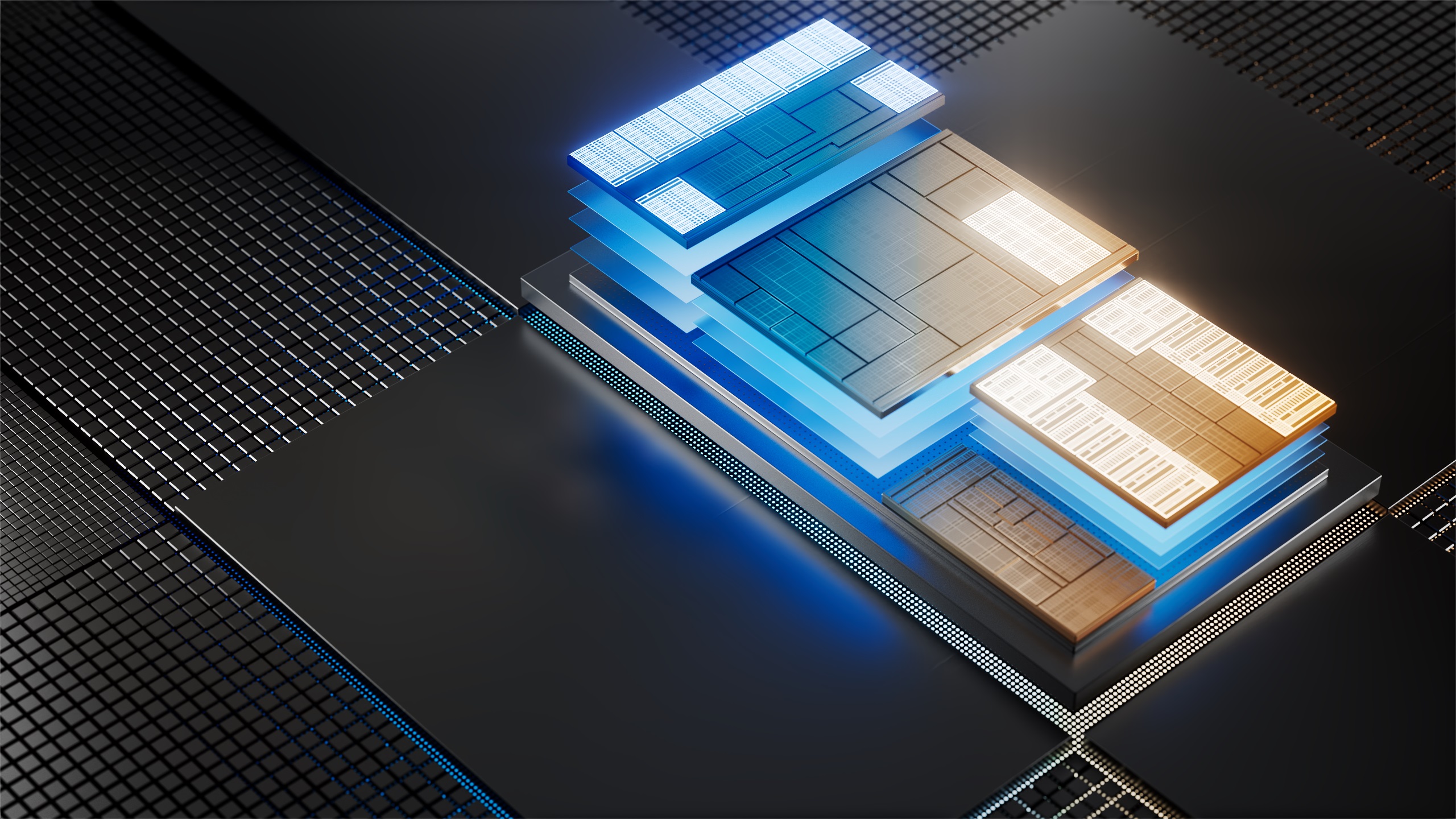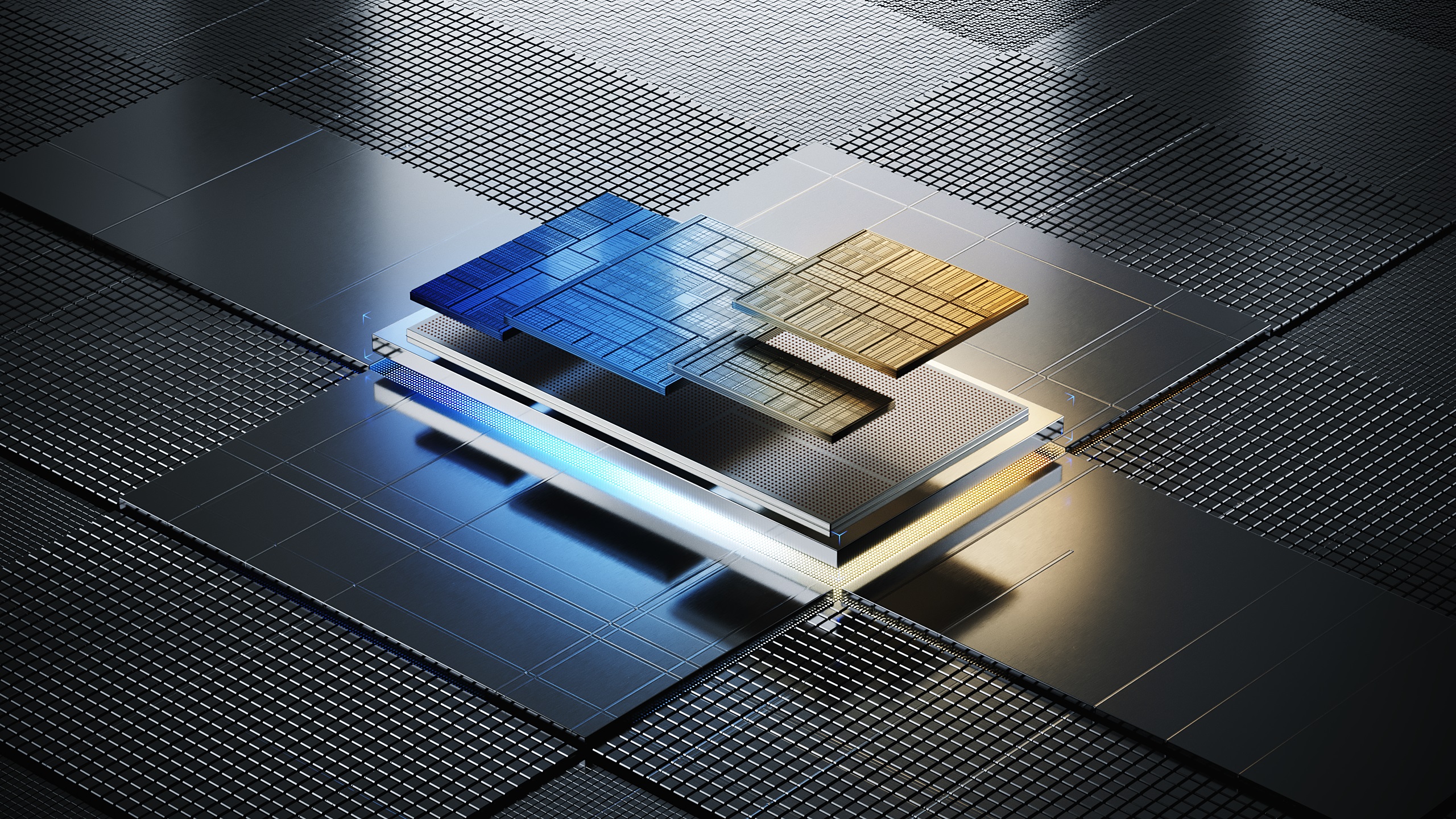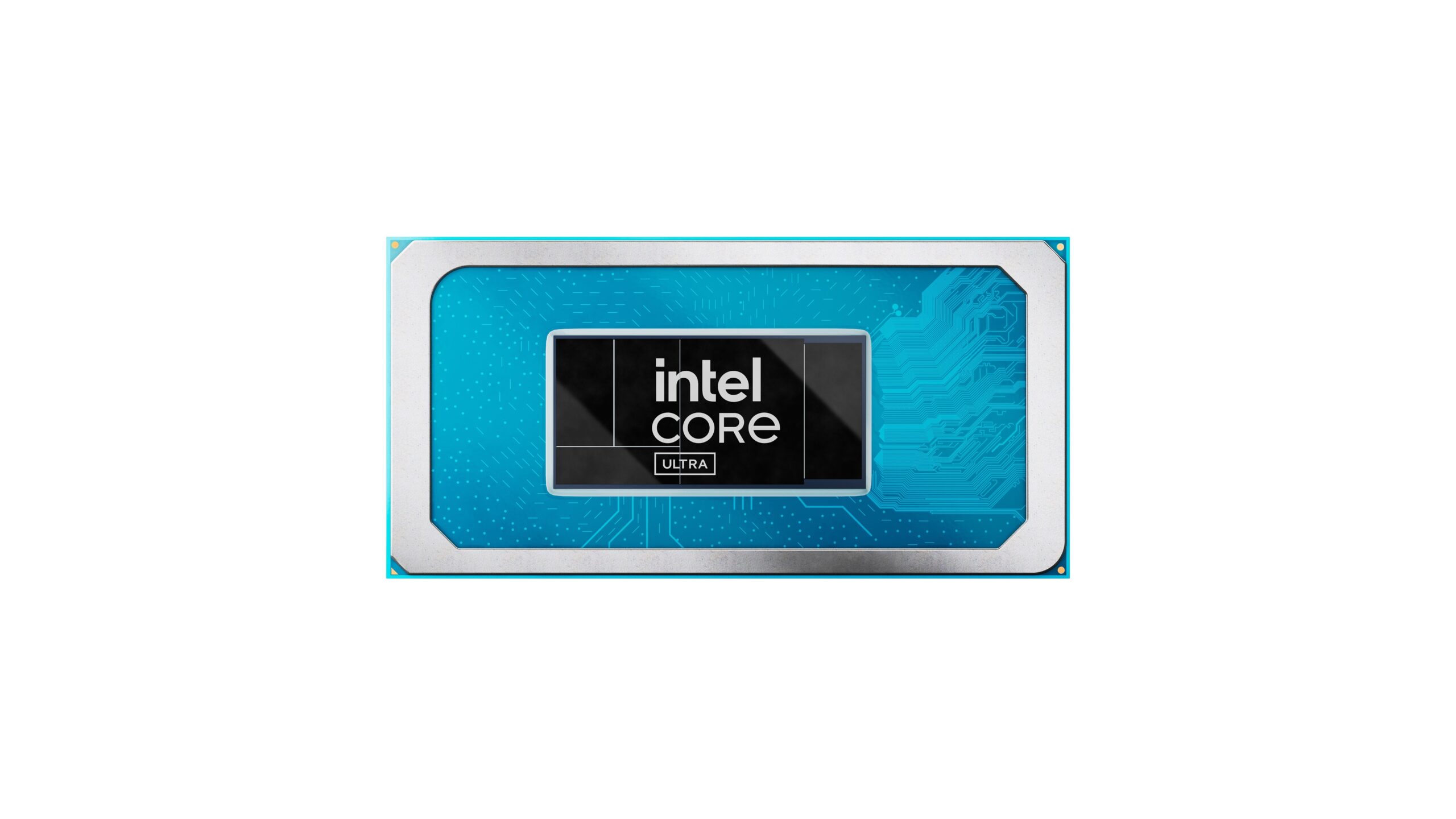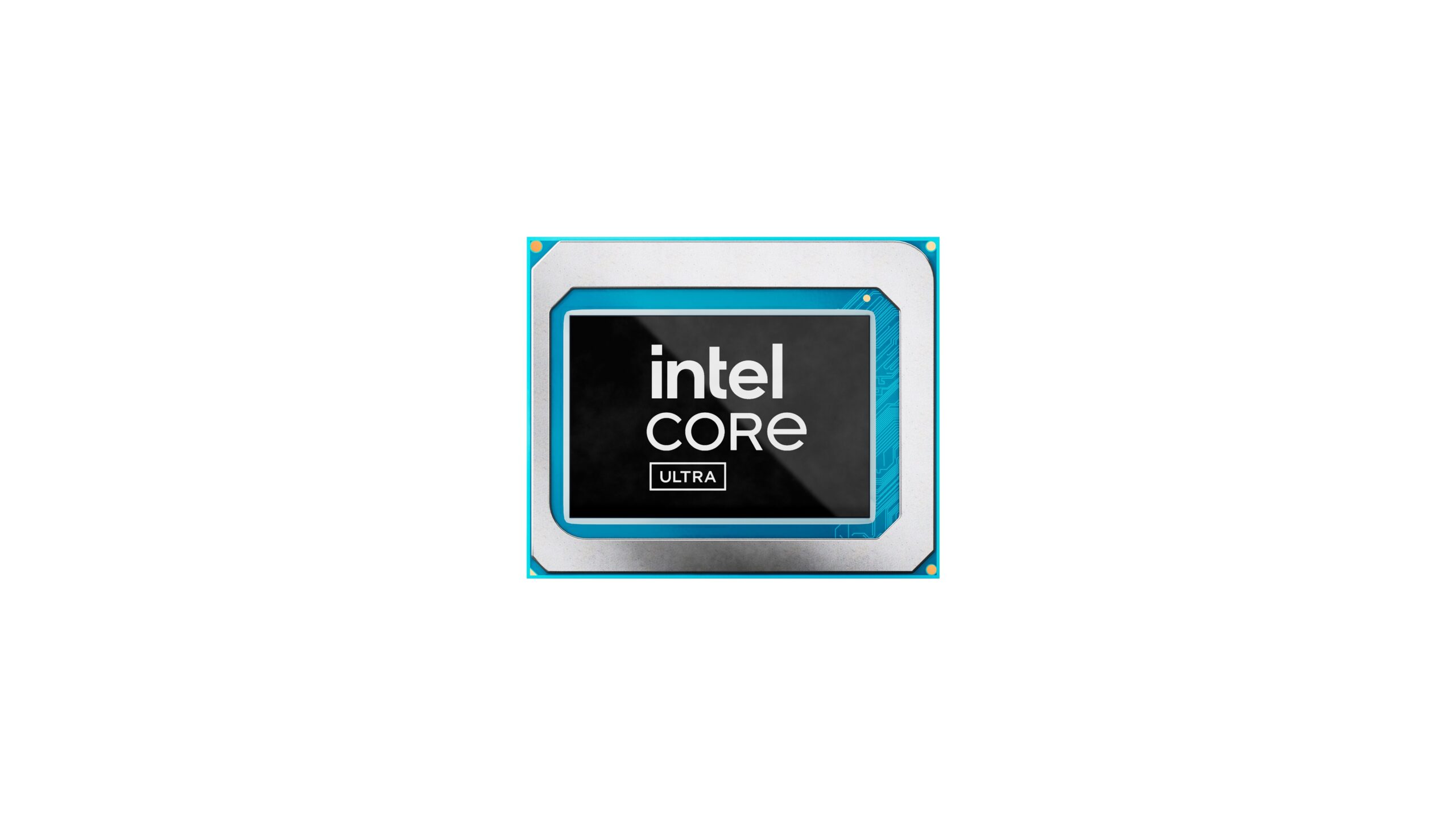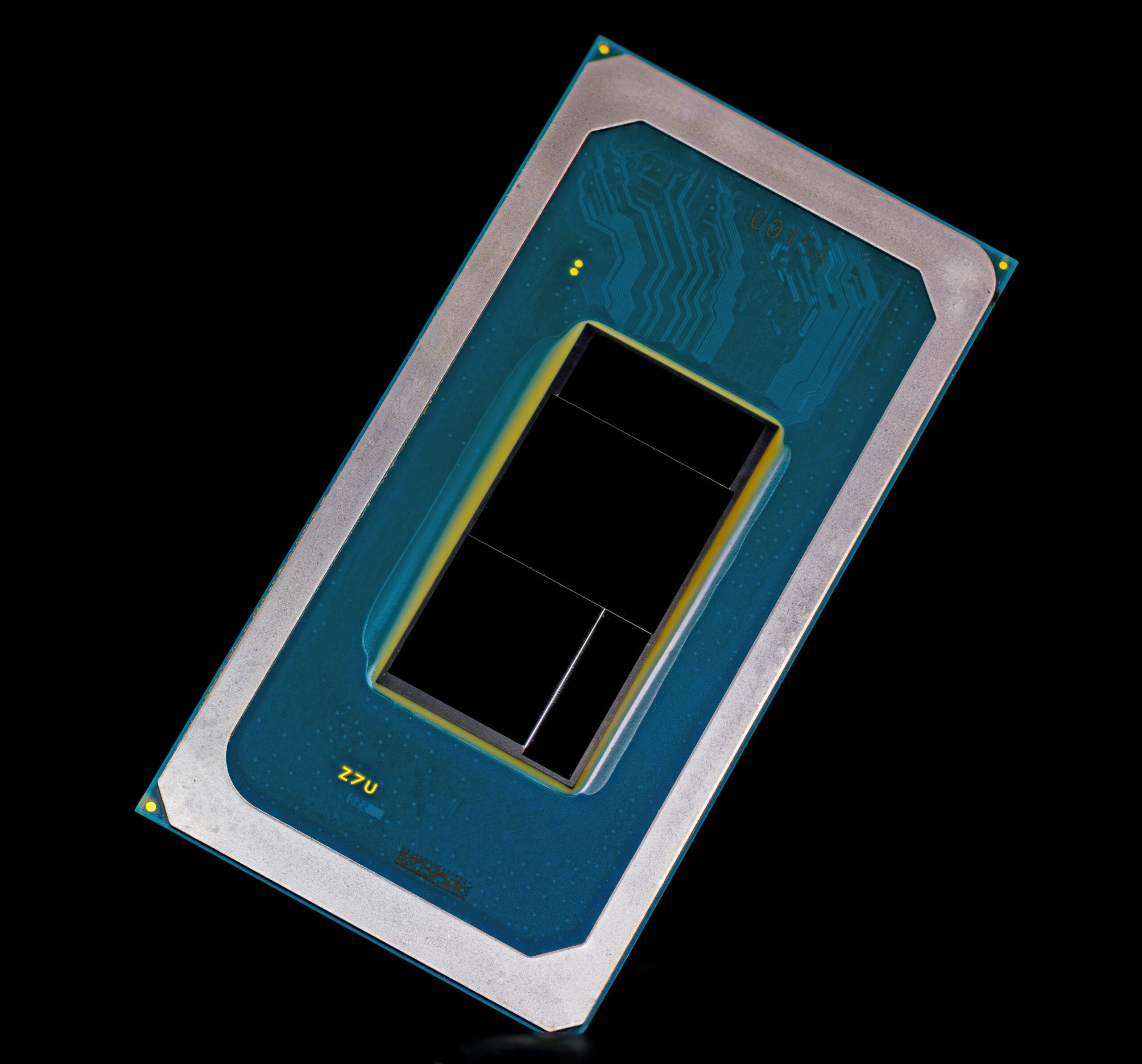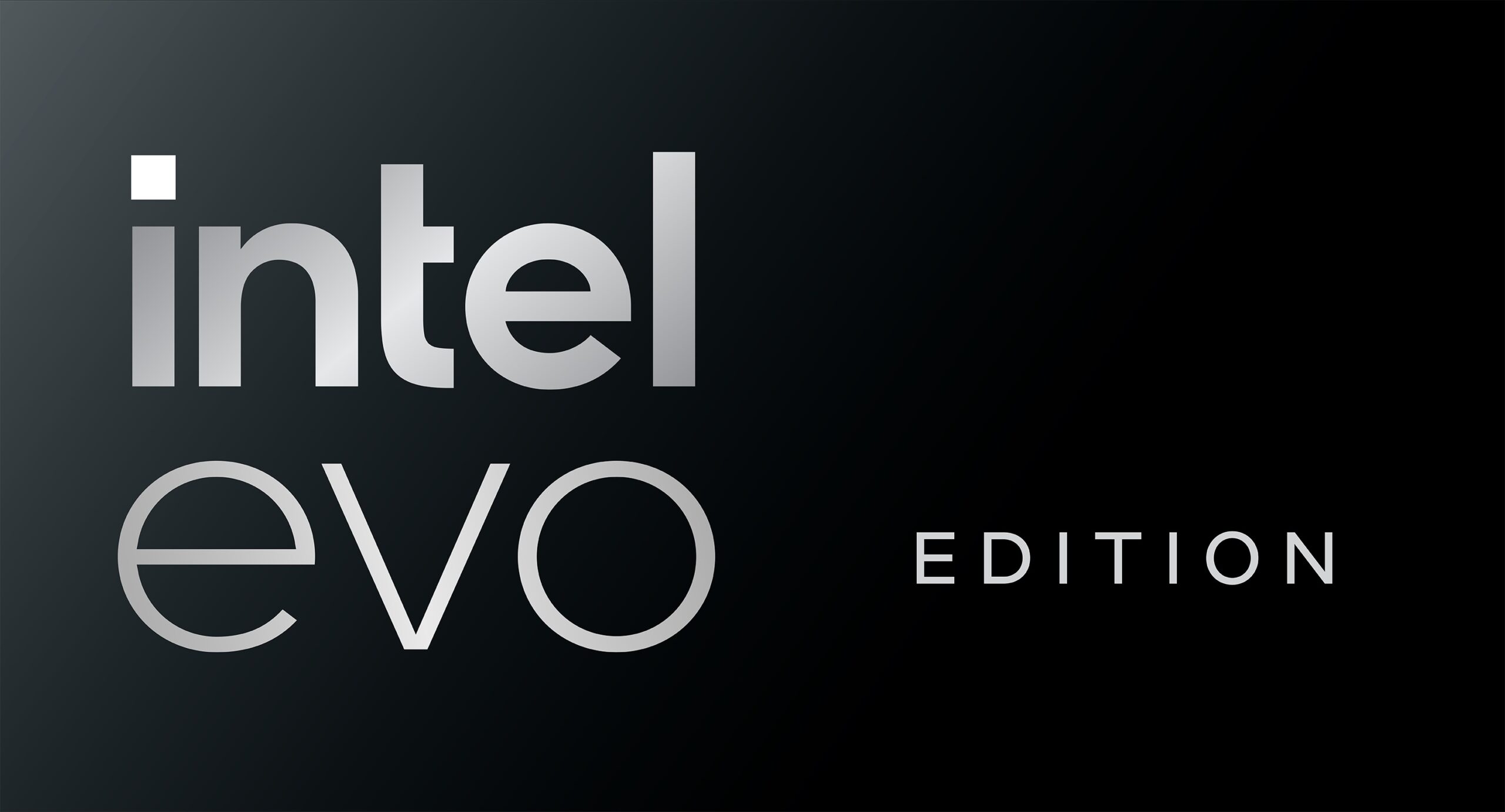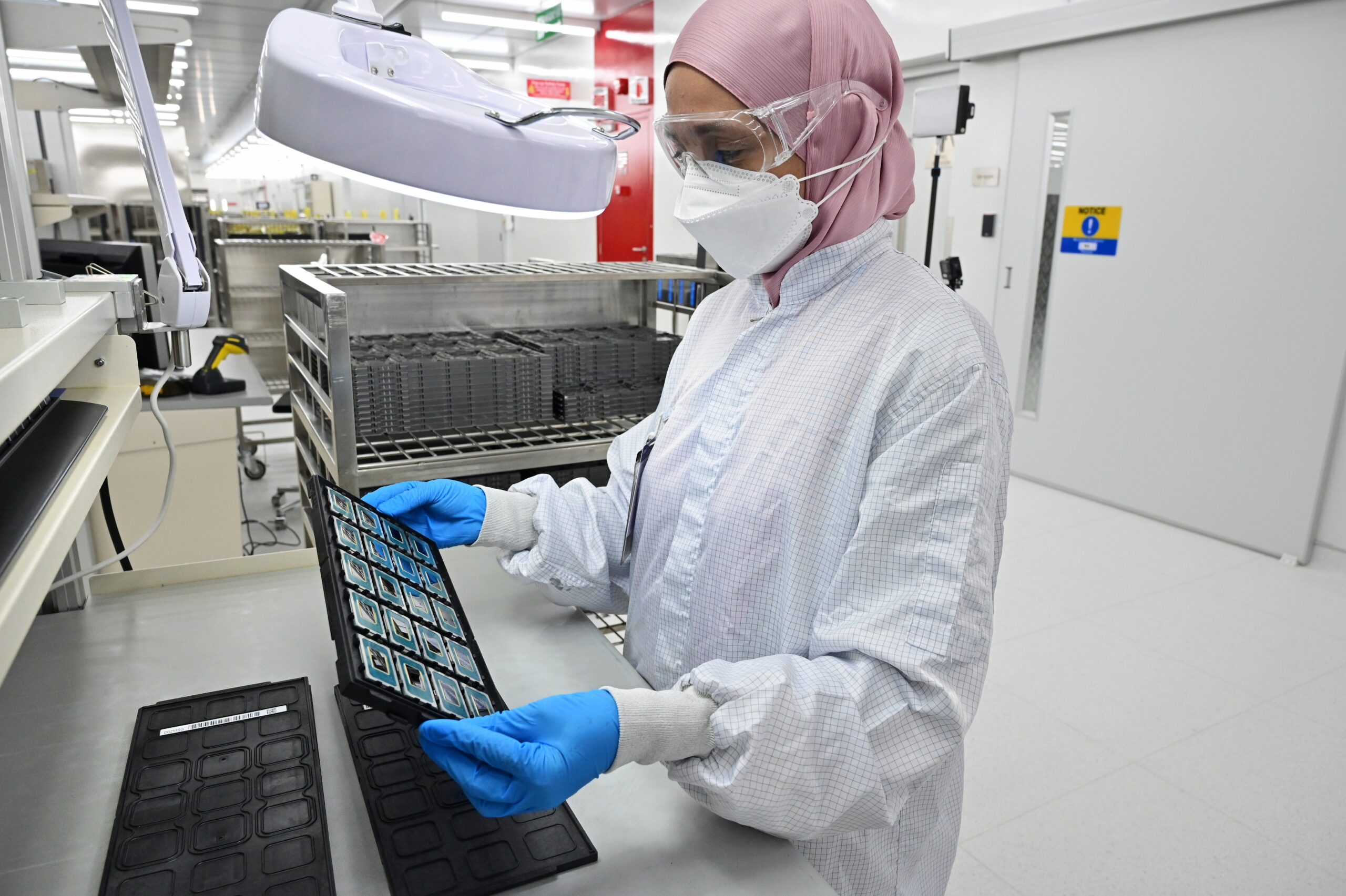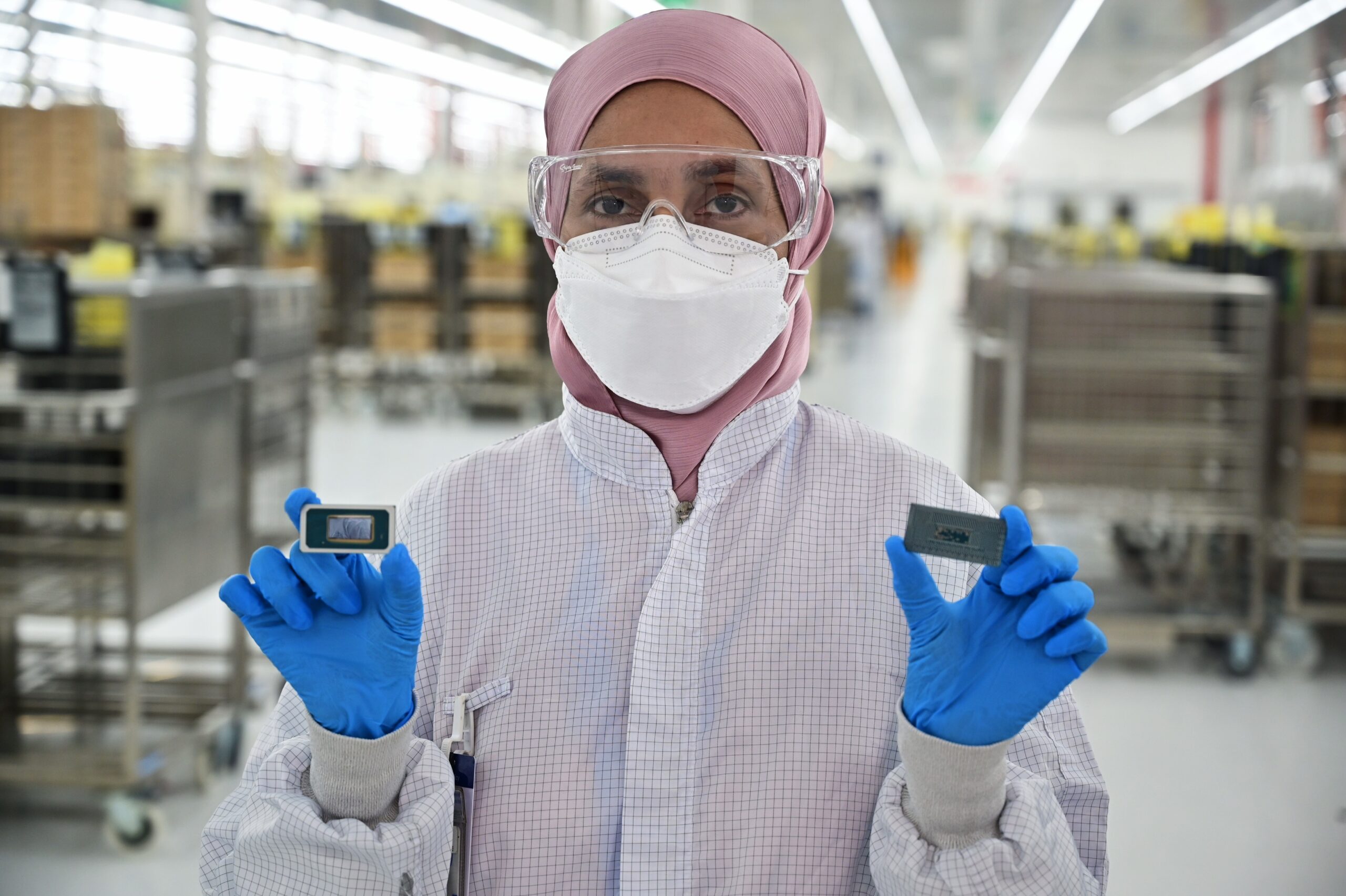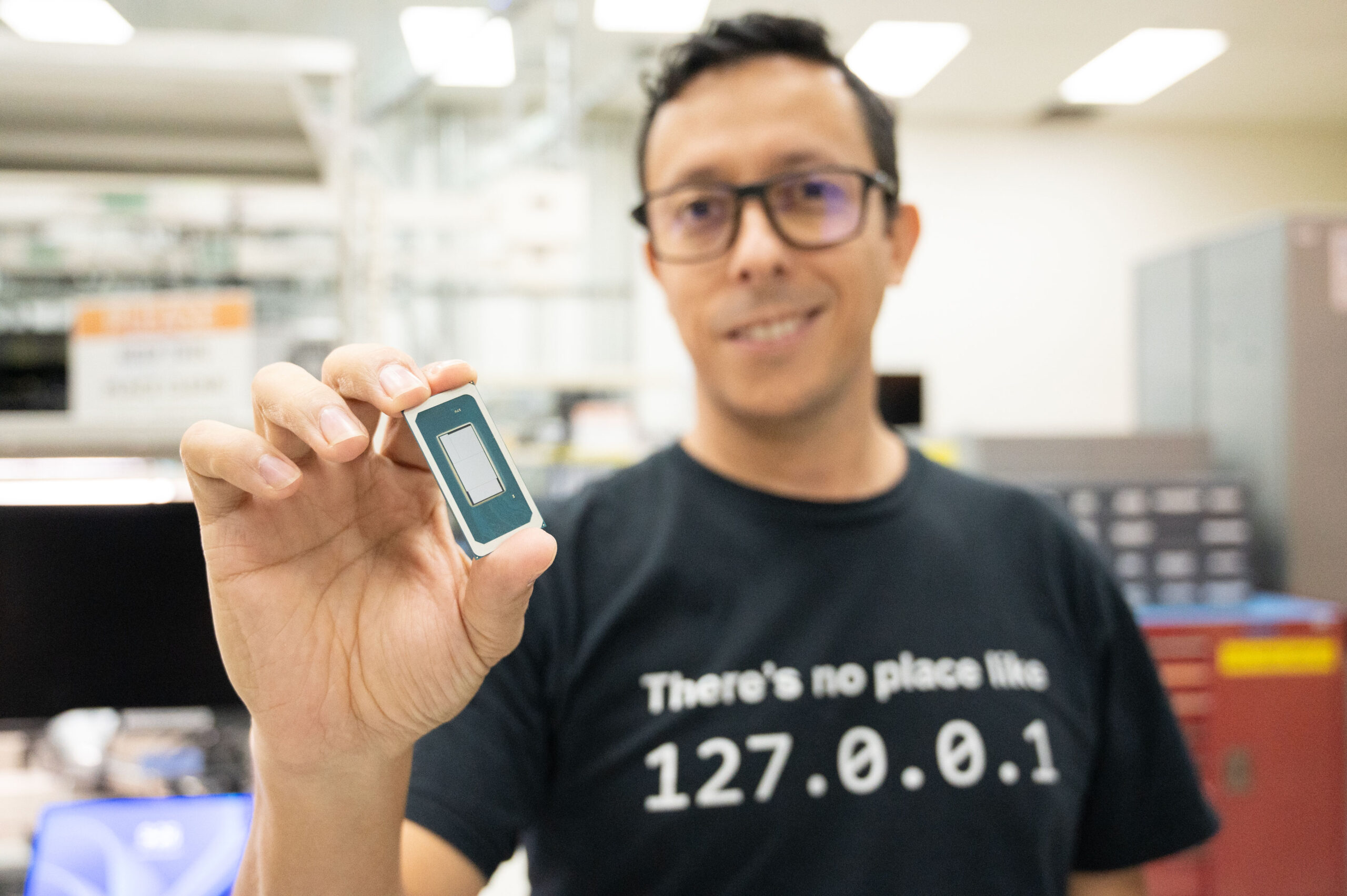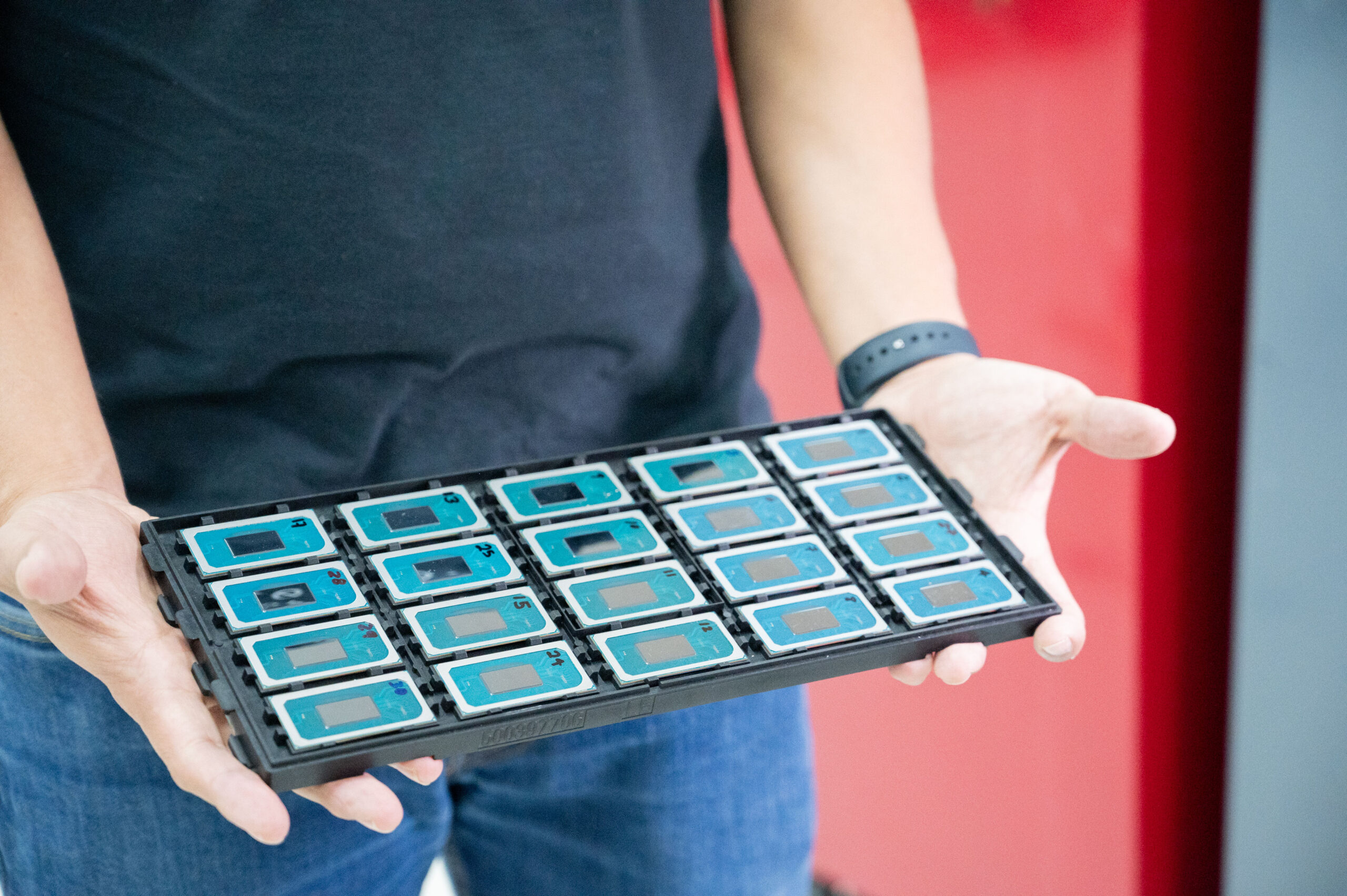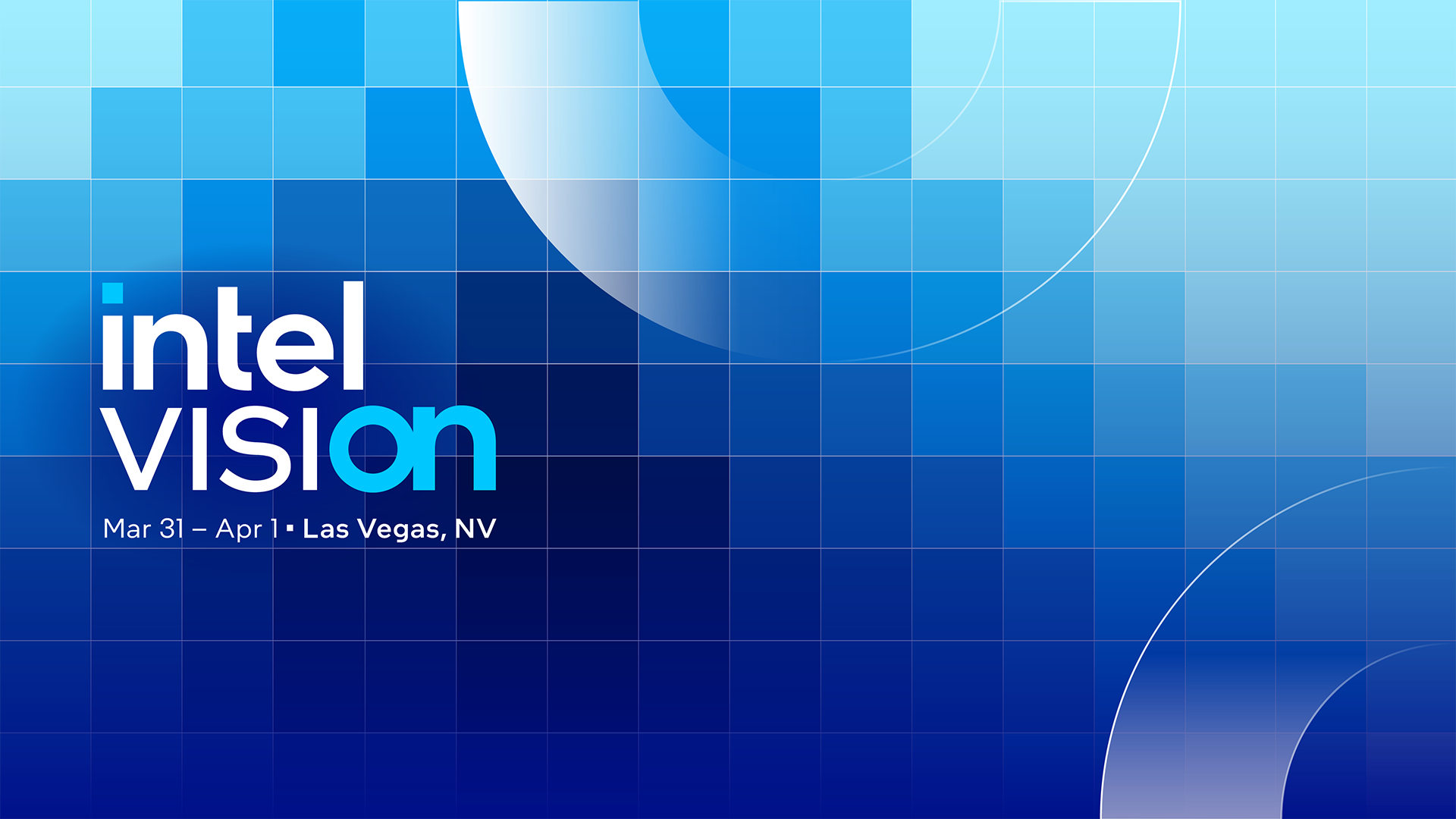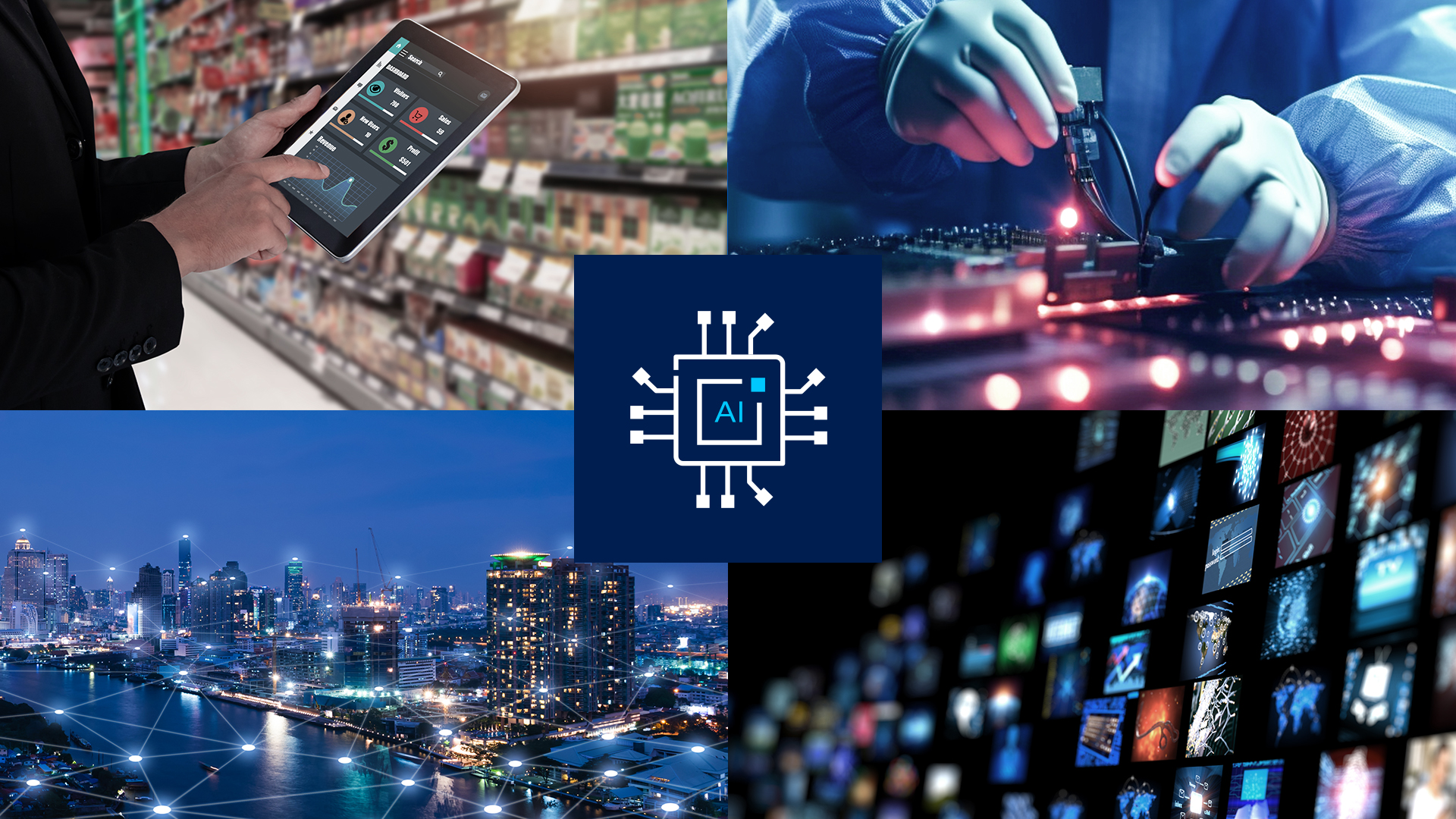What is an AI PC?
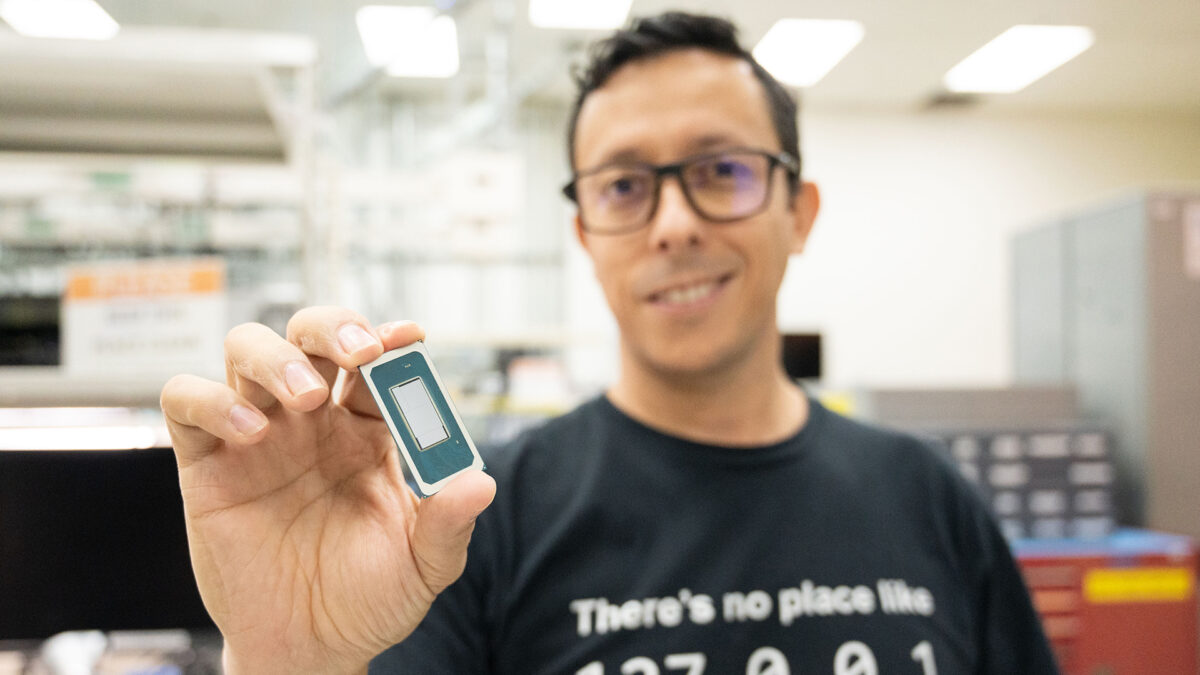
An Intel engineer holds an Intel Core Ultra processor being tested at the Client Computing Group lab in the Intel Costa Rica Design Center in November 2023. On Dec. 14, 2023, Intel introduced the Intel Core Ultra mobile processor family. Powered by Intel’s 3D performance hybrid architecture and built on the Intel 4 process, new H- and U-Series processors deliver a balance of performance and power efficiency, immersive experiences, and AI acceleration. (Credit: Intel Corporation)
What will your PC look like when it’s infused with AI? And what is the Intel advantage?
Chances are if you ask 10 different people “What is an AI PC?” you’ll get 10 different answers. But that’s true of the early days of any pivotal piece of technology. It’s hard to peer into the future and imagine what the world will look like.
At Intel Innovation in September 2023, Intel CEO Pat Gelsinger compared artificial intelligence and its impact on the PC to Wi-Fi’s impact on connectivity.
“The AI PC will be a sea change moment in technical innovation,” Pat told developers, reminding them that the Centrino platform was what broke open Wi-Fi back in 2003.
Ready to lead the charge for the AI PC is Intel® Core™ Ultra, Intel’s first PC platform to feature a built-in neural processing unit (NPU). Introduced in December 2023, this dedicated AI engine offers power-efficient AI acceleration and local inference on the PC. That’s the “how” of AI in your PC. If you’re a little less clear on the “what,” you’re not alone.
More: Intel Core Ultra Processors (Press Kit) | “Intel Everywhere” (Press Kit) | Intel Core Ultra Processors Explained in 60 Seconds (Video) | AI Demo: Image Recognition on Core Ultra AI Engines (Video) | The AI PC powered by Intel is here. Now, AI is for everyone. (Intel.com)
That’s where working side-by-side with the engineers architecting the future has its perks. I caught up with Caitlin Anderson, vice president in the Sales and Marketing Group and general manager of the Client Computing Group Category, and Robert Hallock, senior director of Client Technical Marketing in the Client Computing Group, to ask some basic questions and some not-so-basic questions about the AI PC.
What is an AI PC? ('Look, Ma! No Cloud!')
An AI PC has a CPU, a GPU and an NPU, each with specific AI acceleration capabilities. An NPU, or neural processing unit, is a specialized accelerator that handles artificial intelligence (AI) and machine learning (ML) tasks right on your PC instead of sending data to be processed in the cloud. The GPU and CPU can also process these workloads, but the NPU is especially good at low-power AI calculations. The AI PC represents a fundamental shift in how our computers operate. It is not a solution for a problem that didn’t exist before. Instead, it promises to be a huge improvement for everyday PC usages.
So how does it work? Compared to generative AI and the massive large language models (LLMs) trained on tons of public data, the AI that will happen on your PC is more accessible on pretty much every level. The concept is easier to digest, and because it’s trained on your data, without needing to access the cloud, the benefits are more immediately appealing to a broader population.
In the near-term, the AI PC world involves personal assistants and smaller AI models running directly on your PC, using your data to offer personal, private, more secure AI enhancements for things you already do every day – taking meeting minutes, organizing a fantasy football league, automating enhancements for photo and video editing, or laying out the perfect itinerary for a family reunion based on everyone’s arrival and departure times.
Would You Like Apps with That?
As software makers like Adobe and Zoom look to AI to enable increasingly advanced features, the demand for more powerful hardware increases. And as hardware becomes more capable … there’s more room for software innovation. Do you see where I’m going with this?
Robert Hallock explains that AI changes how applications operate.
“AI software is a different type of software from conventional applications. It’s different algorithms and different types of execution on the CPU,” he says.
Intel is working with software vendors and original equipment manufacturers (OEMs) to help them make the most of the AI capabilities built into Intel Core Ultra processors. As part of the AI PC Acceleration Program, dedicated Intel teams provide assistance – from general guidance to engineering resources – to vendors eager to modify their apps to squeeze all they can out of Intel Core Ultra’s AI prowess. That includes application performance (make it run better, like better background blurring in Zoom) as well as application features (make it work better, like object removal at the touch of a button in Photoshop).
“I recently saw AI create an entire PowerPoint from nothing,” Hallock says. “As a jumping-off point, not having to decide how many slides you need, what order they should go in, how they should be laid out or broken down – it removes the ‘blank page’ at the start of a project and helps you get to work faster.”
Download 12 images (ZIP, 34 MB)
Intel's Edge over the Competition
Ahead of Intel Core Ultra’s launch in December, Intel worked with 100 independent software vendors (ISVs) on more than 300 AI-accelerated features to enhance PC experiences across audio effects, content creation, gaming, security, streaming, video collaboration and more.
This is a massive advantage for Intel competitively. When I ask Hallock how Intel's AI PC is different from the likes of Qualcomm or AMD, he says software enablement, scale and immediate availability is a big differentiator for Intel. At the December launch, Intel Core Ultra processors were set to power more than 230 laptop designs.
“The company that does the most with software vendors to optimize the experience will have a big leadership advantage in compatibility,” he says. “It’s the first great filter – the ‘will it or won’t it run’ filter – and it comes down to how deeply you are integrated with the ISVs and how much time you’ve spent working on them. Intel is very far ahead.”
How will I Know I Have an AI PC?
How will I know if I have dial-up internet or broadband? Trust me, you’ll know.
All these neat features that are available in new apps will be the first giveaway. If your laptop can deliver you a daily briefing that’s prioritized by importance and urgency by analyzing email, calendar, traffic and weather data, you’ll probably have an inkling something is different. The second giveaway will be how fast your computer can rip through tasks that use those new features.
When I ask Hallock if the era of the AI PC and all these AI-enabled apps will create “the haves and have-nots” of client-side AI, the answer is not an outright no, but it’s not a yes either.
Instead, if you have a computer without an AI-enabled processor, you’ll probably encounter a mix of two situations: either your computer will have the AI features, but using them will be slow and consume a lot of battery, or the function might be farmed out to the cloud (where the round trip of leaving your device, heading off to the big computer in the sky for processing and then coming back to your computer would introduce a different kind of slowdown).
What will This Do for the PC Industry?
We are headed into a transformational time for client-side AI and, by extension, the PC.
Intel plans to sell 100 million AI PCs by 2025, and the timing is looking good: Amid reports that the PC market is starting to turn around after historic declines, the arrival of the AI PC offers consumers a compelling reason to upgrade.
Anderson explains that, for Intel, the opportunity is massive: “Intel is leading with our first-mover advantage on Intel Core Ultra processors in the AI PC opportunity. Our open ecosystem approach, vast footprint of devices and software enablement on AI applications translating to use cases for our customers is a key differentiator for us in the market.”
The work goes beyond the chipmakers and software developers. As AI PCs take over (no, not like that), innovation in software and first-party solutions will blossom. Acer was a part of Gelsinger’s Innovation keynote and showed off an Intel Core Ultra laptop that created a moving wallpaper from a text prompt, in real time and all on the device.
"Our OEMs and end customers are leaning into the innovation and the opportunity to drive faster refresh on PCs as a result of these new AI capabilities," Anderson says.
Right now, these types of first-party features from OEMs are designed to show what an AI-enabled device is capable of and give customers a reason to take the plunge. (After all, you’ll hardly walk into a retailer and sign into all of your accounts just to test the personalized results.) But compare the breadth of smartphone apps in 2009 to the volume and variety of apps in 2019 and you should have some idea of how much potential there is. Between solutions from OEMs, cloud-based offerings like Microsoft Copilot, and continuing advancements in silicon, the future for the AI PC is looking kind of epic.
While I daydream about never having to stare at a blank page again (finally, a cure for writer’s block), I ask Hallock what he’s most excited about. He says the possibilities are limitless, literally.
“The sky’s the limit,” he tells me. “You could create a game that never ends because AI just keeps creating more and more of it as you play.”
Jane McEntegart, a member of Intel’s Global Communications Group, has worked at Intel since 2019.

